The Stromer ST3 is a speed-pedelec that has the cool looks of a Tesla and a likewise price-tag. And there are more resemblances to the best sold electric car. Watch the videoreview!
- Price: € 7.330,00 (from € 6.990,00)
- Weight: 31,6 kg
- Size: frame size M
E-bikes and speed-pedelecs are a growing part of the Dutch bike market and since I am based in The Netherlands I find e-bikes and speed-pedelecs an interesting part of the bike market. The e-bikes and the speed-pedelecs that I review are always bikes that are in one way or the other also usable as trekking bikes. The Stromer ST3 in this review is not different in that respect, but in many other ways it is a very different bike.
Swiss made
Stromer is a Swiss based company. They started designing bikes around 2007 and the first bikes rolled out of the factory in 2009 on to the Swiss market. The philosophy of Stromer founder Thomas Binggeli was that he wanted to design bikes that would get commuters out of their car and onto a bike. A Stromer of course.
The idea of convincing car commuters to become bike commuters is a pretty logical one. A lot of people travel only short distances by car to the office. Yes, electric cars are changing this slowly and electric bikes do help too. It is a nice way of getting our world a bit greener. I am not getting into the discussion on how green electric cars and bikes are since I don’t have the answer. I do question the sustainability of battery packs at the end of life stadium though. Now let’s get back to the Stromer ST3.
Frame and fork
The frame of the Stromer ST3 – and all the brothers and sisters – is made out of aluminum. The big beefy downtube houses the enormous battery. The capacity of the battery doesn’t matter to the frame by the way since they all have the same size. The top tube is less beefy but still pretty wide and it houses the touchscreen that operates the bike. On the left of the top tube is the connector for the charging system and on the right there is a button that releases the battery.
The whole left side of the downtube – with the black rim around it – opens so you can take out the battery. Underneath the top tube and behind the head tube is the on/off button for the system. The welding on the frame is superb; the welds are smooth but not filled with putty so you can still see the craftsmanship of the welder or welding robot. Like the frame the fork is made of aluminum too.

Size and weight
I am reviewing a Stromer ST3 with frame size M and that is also the smallest frame size available. With my 1.69 cm the M is fine and I don’t have the feeling the bike is too big for me. The seat tube is 432 mm, the top tube 548 mm and the down tube is 710 mm. The ST3 is also available in a size L and XL. For the full sizing specs just follow this link. Stromer does’t state the weight of their bikes in the Technical data page but I measured a weight of 31.6 kg. This is the complete bike with pedals. Be aware of the fact that the bike is legally rated for 150 kg maximum. This is bike, luggage and rider. So if you are more than 118,4 kg consult Stromer about this.
Rear wheel engine
Unlike a lot of other e-bikes en speed-pedelecs the ST3 has a motor that is positioned in the rear wheel. The motor is a Syno Drive II and has a claimed power of 820 Watt, a torque of 44 Nm and a maximum speed up to 45 km/h. For the US it is a bit different and Stromer claims 600 Watt and Class 3 wit a speed up to 28 mph. Since the motor is a rear-wheel mounted one, the chain stays and the seat stays of the frame are constructed accordingly: Chunky like the rest of the frame.
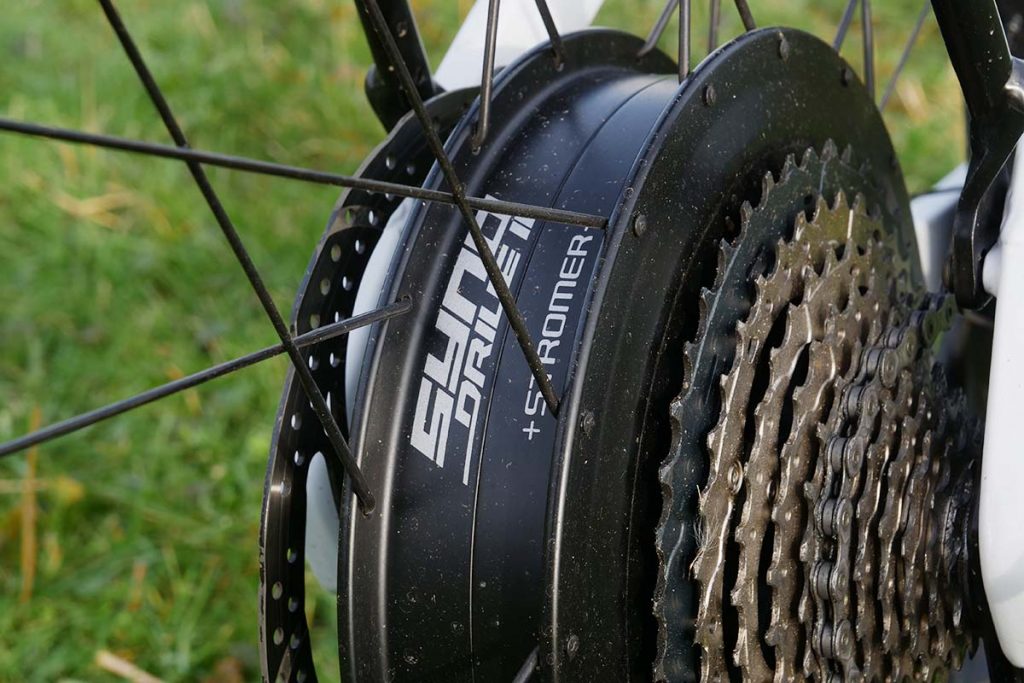
983 Wh Monster battery
The power to the Syno Drive II is given by a big battery. The Stromer ST3 speed-pedelec is designed for commuting but also for traveling. Since most people only travel short distances from home to work and back the battery life is not that important. Therefore Stromer gives you the opportunity to chose between four types of batteries ranging from a 500 Wh to a 983 Wh.
I requested the ST3 to be equipped with the 983Wh monster battery, because I wanted to use the bike as a travel bike for going on day trips but also on bike holidays going from one B&B or hotel to the other. Or staying on campsites with electricity. Stromer claims with the 983 Wh battery a range up to 180 km which – in my opinion – is pretty briljant. This makes the bike suitable for holidays. But there is a little bit more that meets the eye.
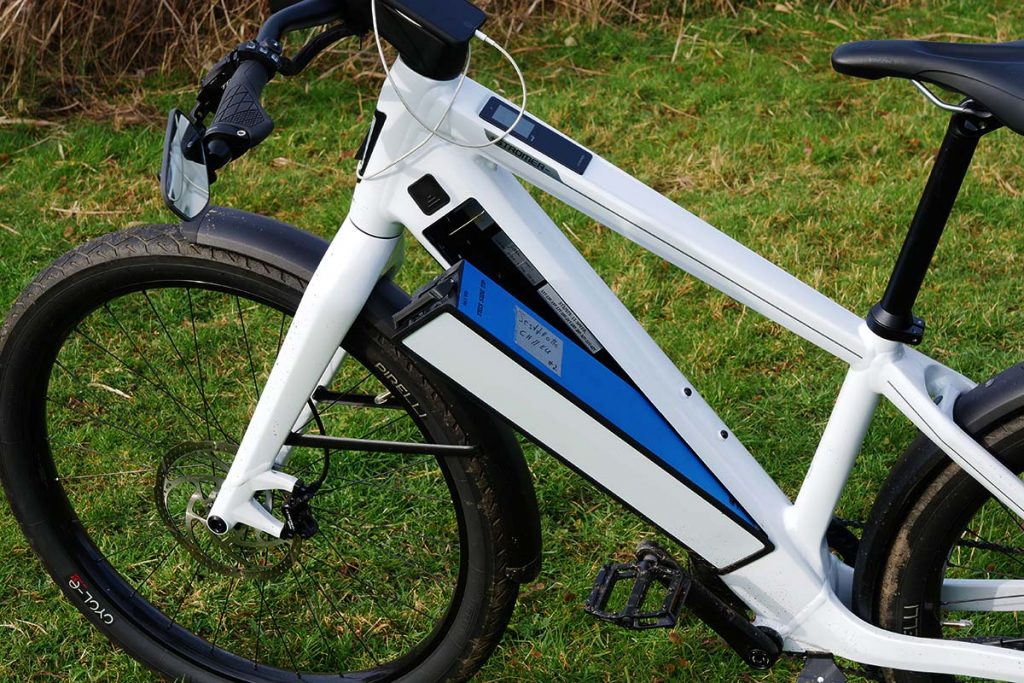
Test circumstances
The period that I had the Stromer ST3 for testing, was not the best periode weather-wise. January was not too cold but still: an average of 6,2 degrees. This influences the battery. But there was more. The weather was awful: lot’s of rain – 169,2 mm, the highest since 1901…- and we had three weeks in a row with storms – Ciara, Dennis and Ellen – passing by and high winds (9 beaufort +) for free. Not the best weather for reviewing a bike. Or is it… The thing with this kind of weather is that I like it. And I think it is perfect for testing gear in extreme conditions. With a bike you learn a lot about stability and battery range in a short period of time. But what did I learn?
The E-system
Firing up the ST3 is easy: press the rubbery button below the top tube and the system starts. Since this is a test bike I don’t have to deal with pincodes; with ‘your’ bike this can be different. In twe little screen on the top tube I get all the information I need to start biking. The touch screen is also used to change the bikes settings. The menu’s are pretty easy to understand and changing settings is mostly done by shifting sliders. Watch the video!
The screen itself is even in bright sunlight easy te read and switches automatically from day- to night mode. The ST3 has a sim card on board so when it is on, it is connected to the internet. The good thing about this is that updating the system is easy. When neb firmware is available you get notified. It happend to me in the review periode once and it works like a treat. Because of this the ST3 can be connected to the Stromer OMNI app that is available for iOS and Android.
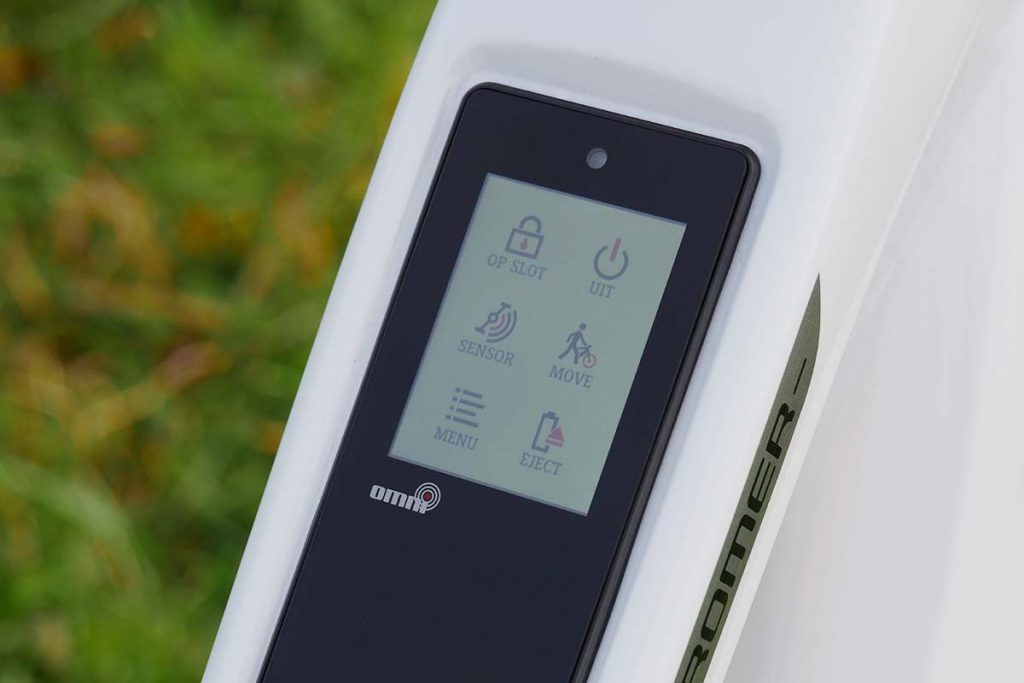
The touchscreen is used for everything you need to to in the Stromer’s operation. 
The position of the screen on the top tube is not in the line of sight.
The Stomer OMNI app
The Stromer OMNI app is a friendly one but doubles quite a lot with the info on the screen of the bike. The App gives information about battery status, travel distance, average speed, time, temperature (outside and battery) etc. It can also be used to change the settings of the bike but again: it doubles more than giving something extra or new. The app shows a google map and you can report your bike as stolen. I’ll get back to the app later.
Support modes
After awakening the system biking is just like biking on any bike. Put force on the peddles and start cycling. What happens next is pretty rocketery: the acceleration is immediate and fast. If you get on the bike for the first time take a peek at the screen on the top tube. There you’ll find the support modes: 1, 2 or 3. Start in 1 or 2 the first time. Three is maximum support and draining the battery while 1 is the energy friendly long lasting mode. Changing between the different modes can be done on screen and with a + and – button on the left side of the handlebar.
The buttons work perfectly but… Be aware that next to the +/- button is a button for the bell. In the fact the bell is an electronic horn that is really loud. Don’t honk if you are close to other bikers or pedestrians because you will scare the crap out of them. The horn is effective but not friendly. I would put a mechanical bell there too. Back to the +/- button. Since it is so close to the horn button it happend a few times that I accidentally pushed the – button while pushing the horn. The result is a changing from support mode 3 to 2 without really being aware of doing this. ‘Why Is the bike all of a sudden not doing what I want it to do?’, I asked myself a few times. After a while you know!
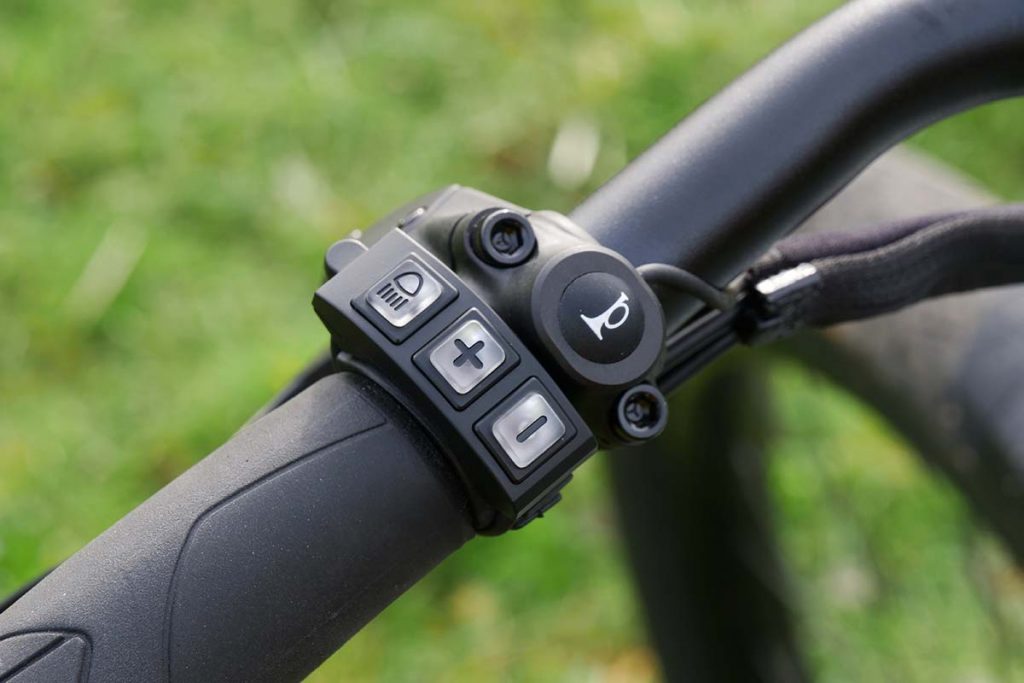
Battery life
OK, so I think for commuters battery life is not that important and to bike travellers it is. For sure this is a rubbish remark. Battery life is important. I did my best to drain the battery as fast as I could. This means maximum support from battery and engine: support mode 3 and riding as much 45 km/h as I could. With the harsh weather conditions during testing, I ended up with an average of around 65-70 km on a full charge.
At first I found this ridiculous little. I expected at least 100 or even 120 km. Then I started realizing that the promised 180 km range is of course not how I thought it would be: 45 km/h in support mode 3 lasting 180 km on flat terrain with no wind and an average outside temperature of 20 degrees Celsius. Stop dreaming Gijs! 180 km is on the flat with no wind doing 20-25 km/h in support mode 1. So the advertised range on the Stromer website could and should be a bit more clear on this. It definitely is not. One time I ran out of juice and I still had to do 7 km with wind up front; not nice, the bike is 30+ kg!
My advice
Remains the questions: is a range of 65-70 km good or bad and am I still disappointed or not. Well, I came to the conclusion that the range in mode 3 of 65-70 km is fine. Especially since I tested in poor non battery friendly conditions. For most commuters – main purpose of the bike – 70 km commuting a day is the max on what they would probably do with a bike. With a longer distance a car would be more sensible.
On holiday there is absolutely no point in biking this fast since you would reach your destination in a few hours, not the idea of a biking holiday. Just use support mode 1 if you have all day and number 2 if you want a bit more support. I would go in 2 because it is a nice balans between support, energy-consumption and the feeling of riding a beautiful bike. It also looks a bit silly doing 20 km/h on a speed-pedelec.
Note: Recharging the 983 Wh battery takes about 5 hours and 45 minutes. I measured it and Stromer claims 15 minutes less. Probably a temperature difference. I noticed that the temperature is a big factor. Keeping the bike in the shed at an outside temperature of 6 degrees I had a charge of 34%. Then I took it into the living room overnight with a temperature of 18 degrees and in the morning the battery was 46%.
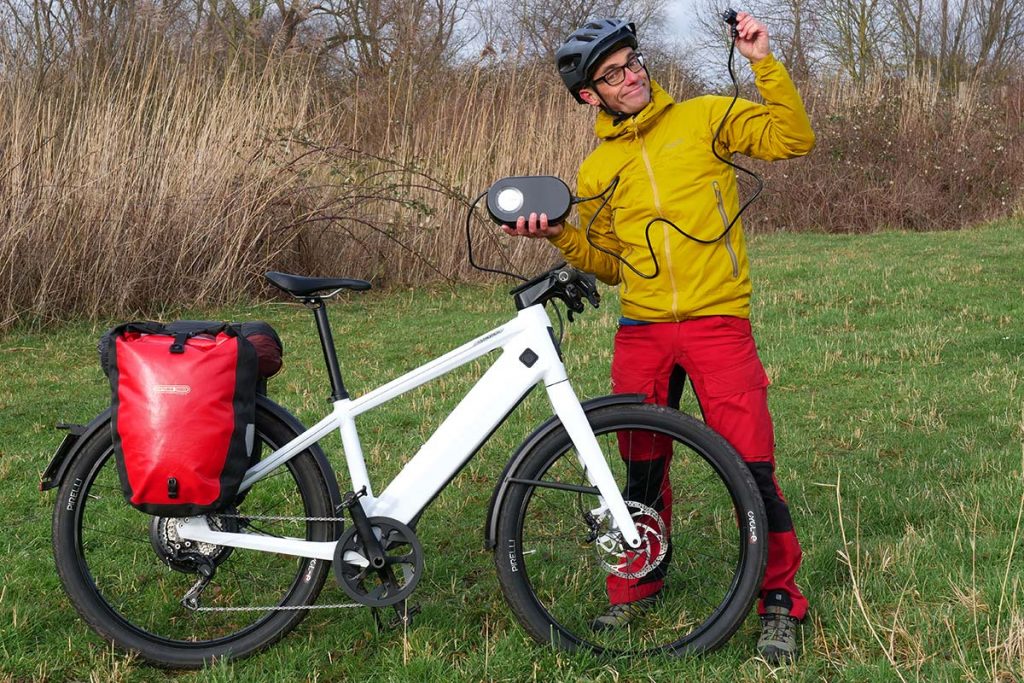
Gears, shifter and crank
With all the attention to the E-system it is easy to forget about all the other components that are need to make a speed-pedelec a bike. Because beside support modes, battery and engine we still need gears. Connected to the engine – or the rear hub – is a Shimano 11-speed cassette with sprockets that range from 11 to 42 teeth. The Shimano SLX Microshifter is positioned on the right side of the handlebar and has a lever for shifting up and one for shifting down.
The shifting – together with the Shimano XT derailleur – is precise and smooth and miss-shifting didn’t happen to me. It is possible to upshift sprocket by sprocket or 3 gears in one shift. In the front a large 52 teeth sprocket is mounted on a FSA Gossamer crank. The combination of 52T in the front and the 11-42T cassette in the rear is a good combination for a broad range; with the wind in the back doing 45 km/h and not pedaling very fast or going slower uphill with a higher pedal frequency.


The Shimano XT derailleur is precise and smooth. 
The Shimano 11-speed cassette has sprockets that range from 11 to 42 teeth.
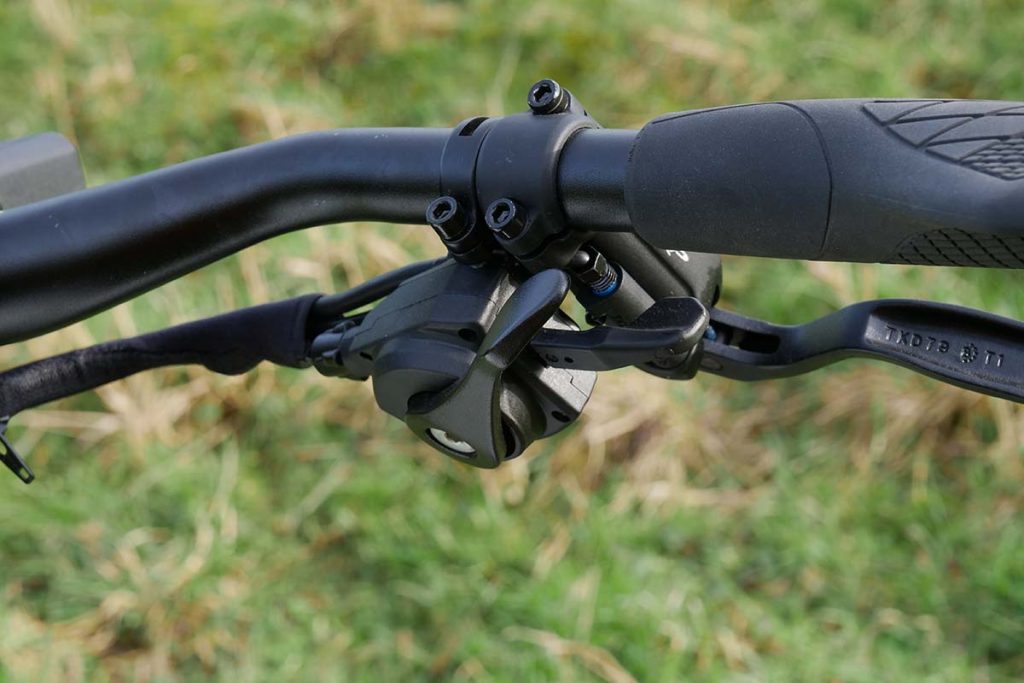
Carriers and luggage
As mentioned above: I see the Stromer ST3 not only as a commuter bike but also as a travel bike. In that respect I like the fact that Stromer equips the ST3 with a decent rear carrier. The carrier is rated for 22,5 kg and that is fine for lightweight bike travel. I always review trekking bikes with two rear panniers filled with 15 kg in total and a tent in the middle. For me this is more then enough gear to bring on a trip. Bikes with front carriers get weight in the front too of course.
The small slim carrier is connected to the frame and the very sturdy aluminium rear fender. The combination feels very solid; even when changing the weight in fast followup corners. Panniers, carrier and bike feel like one solid piece and that is how it’s supposed to be. Funny thing is that the side stand – a Pletscher – is rated at only 40 kg max. With the ST3 weight of 31,6 kg theoretically only 8,4 kg remains to be put on the bike. This is fine for commuting with one pannier and a laptop in it, but for traveling this is just too little. In theory, that is.
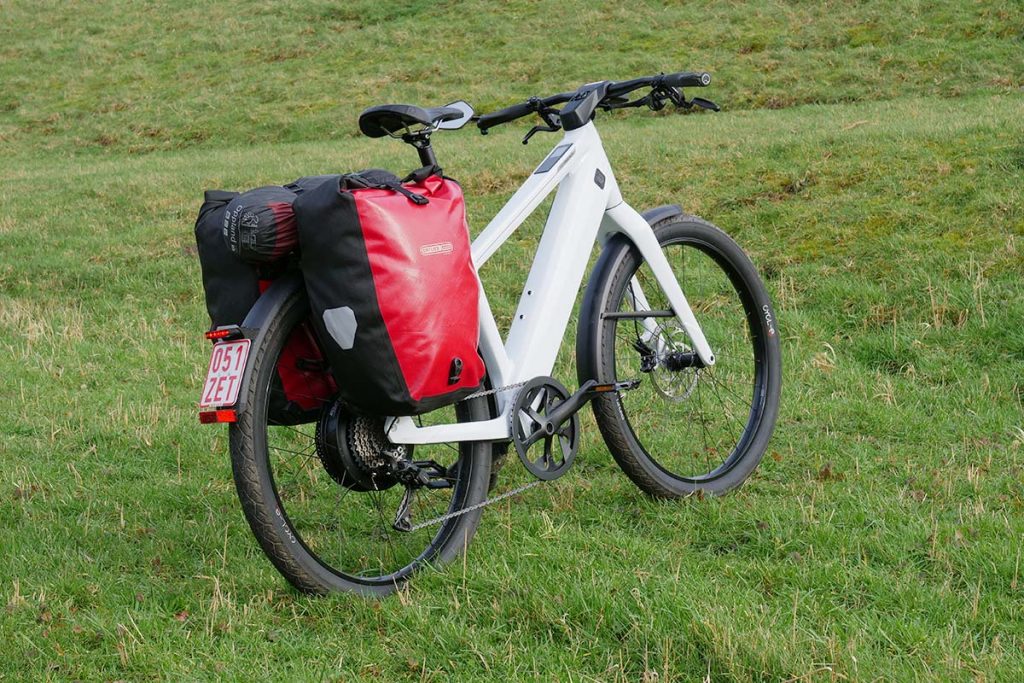
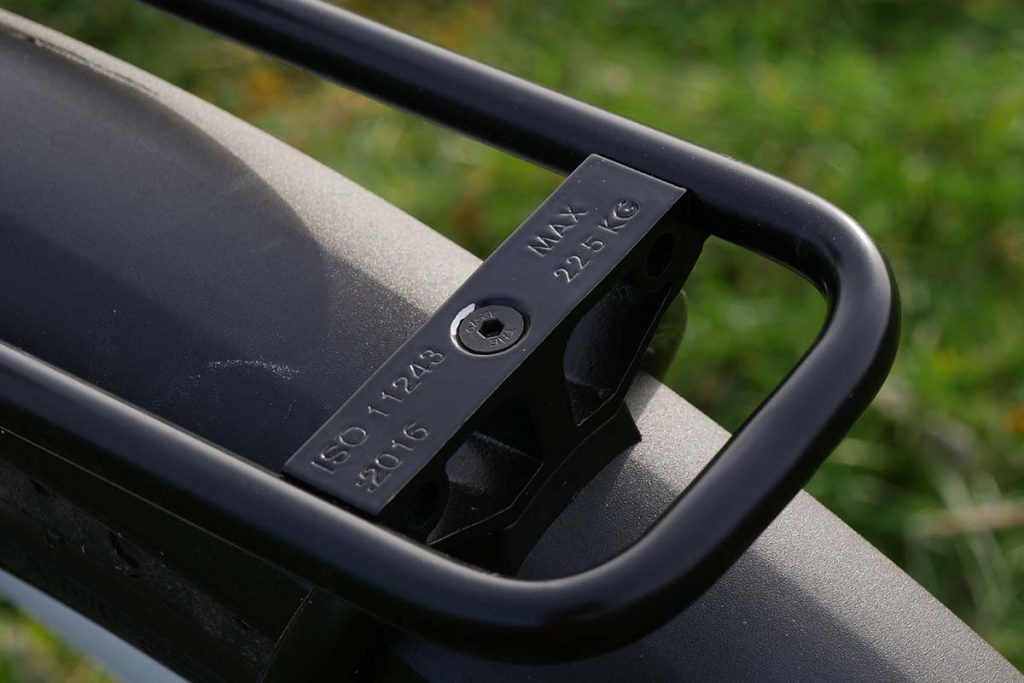
The carrier is rated for 22,5 kg and that is fine for lightweight bike travel. 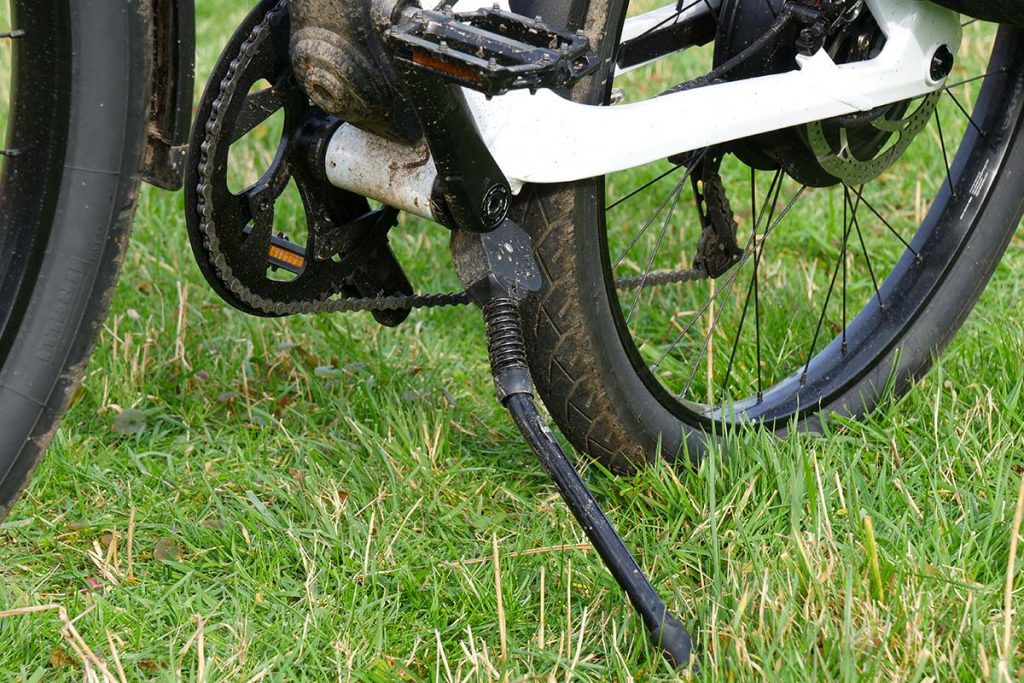
With a 40 kg rating the side stand is underrated for a 22.5 kg carrier.
Disc brakes from hell
One of the things that frighted me in the past the most with e-bikes and speed-pedelecs are the brakes. I tested some bikes with brakes from normal non-electric bikes or with mountainbike brakes. Hence the higher weight of a e-bike or speed-pedelec, brakes were not always up to there job. With the ST3 this is totally the other way around. The Stromer is equipped with 203 mm discs in the front and rear and the front brake has a four piston caliper and the rear a two piston one. Brake levers are Stromer HD492’s and they are developed together with American brake manufacturer TRP.
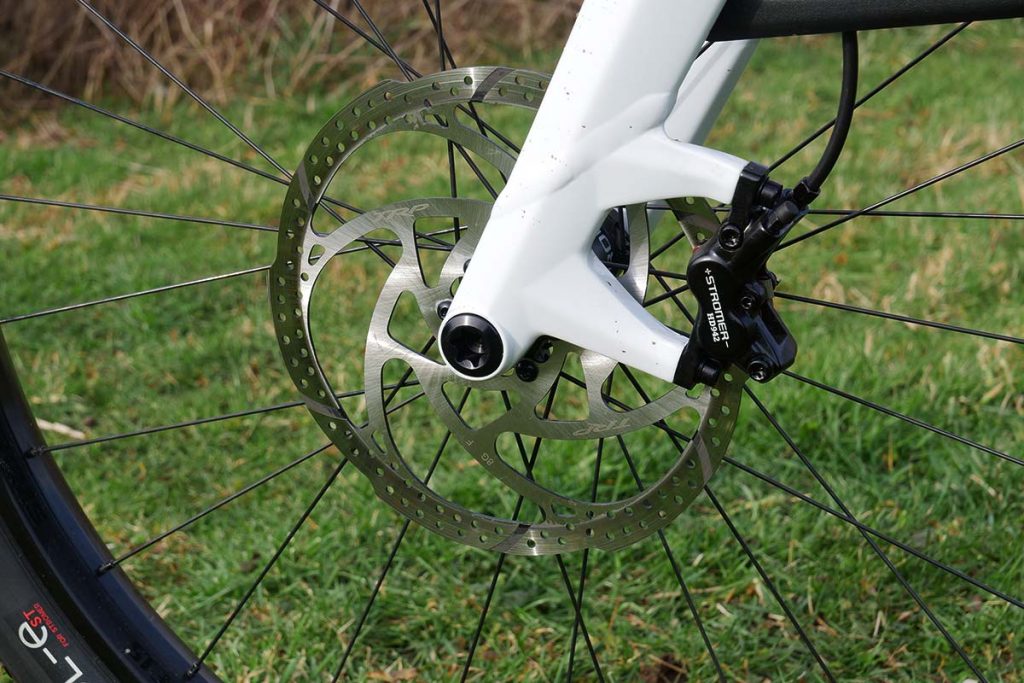
The sweet thing about the brakes is that they have an enormous stopping power that fits a heavy bike that does speeds off almost 50 km/h on the flat. In that respect they are disc brakes from hell. The brake levers have a nice feel to them and the reach of the lever is adjustable. They fit my small hands and will fit large hands too. The balance of braking on flat smooth dry tarmac is very nice. But be warned: with wet slippery autumn and winter roads the front brake needs to be taking care of. Apply too much force to the front brake and it will block pretty easy. But in general: perfect brake system that that fits the ST3.
One cool feature of the brake system is that sensors are build in the brake levers. As soon as you start braking the motor stops delivering power and since it is a rear wheel motor it helps braking. This saves brake-pads and in mountainous areas this should be noticeable. Other cool thing is – and this is what Stromer tells me and I could not test in out flat country – that going downhill for longer distances the engine brakes and generates power to feed the battery. They claim this regenerative braking gives an extra range up to 20%. But again: I could not test this.
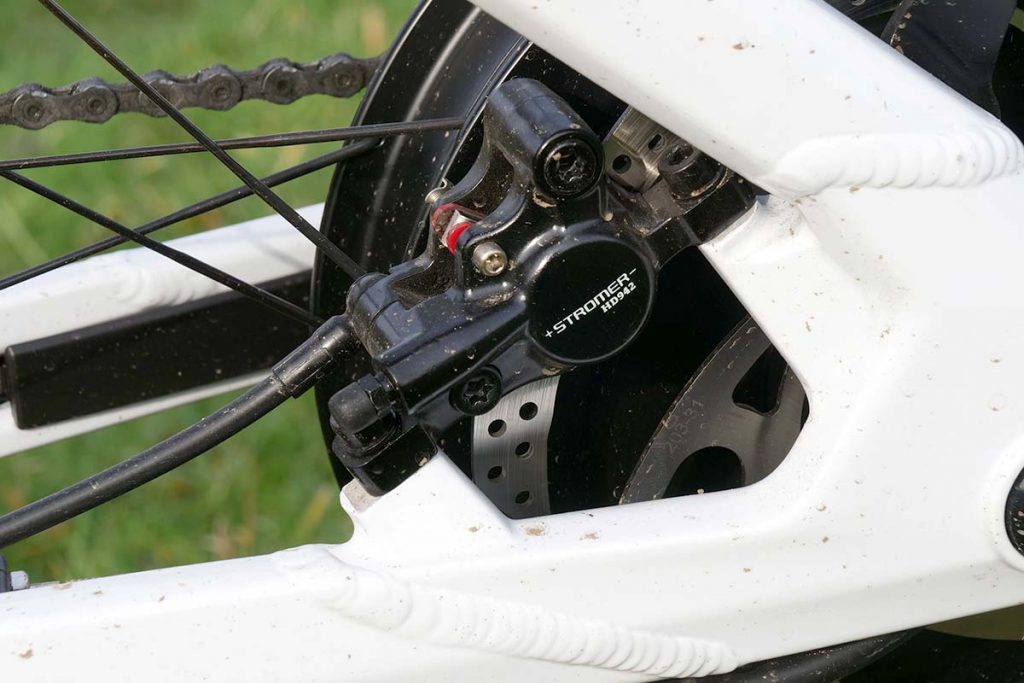
The rear brake caliper has 2 pistons. 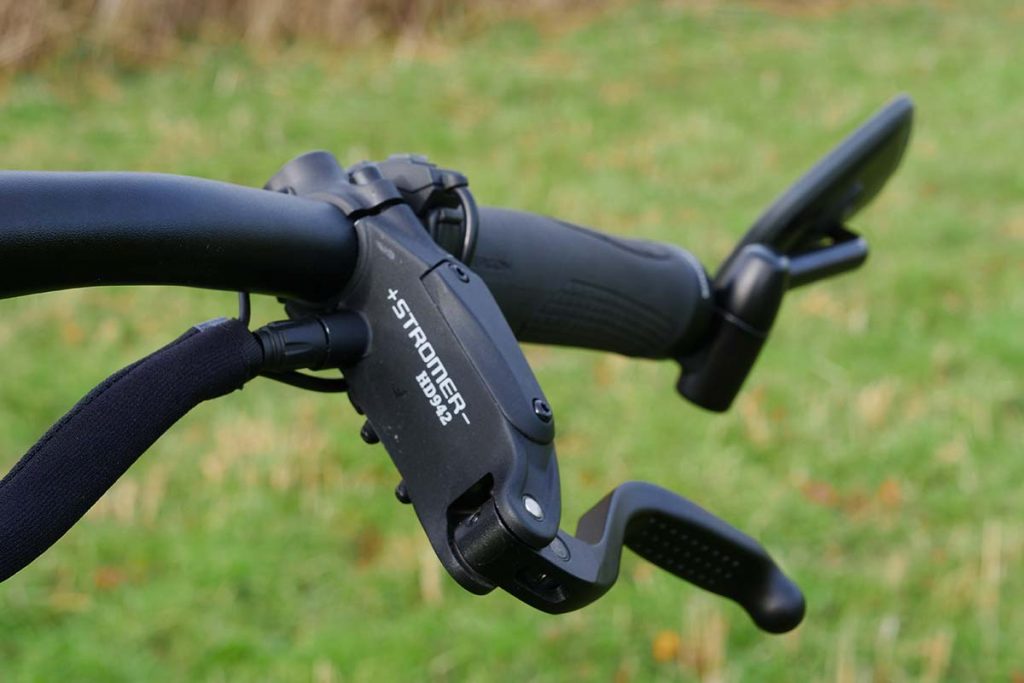
The brake levers are adjustable to fit small and large hands.
Lights
When braking I not only cancel the operation of the engine but I also activate the brake light. The rear light is a Roxim R3E and it is very visible from a big distance and the brake light is even extra bright. The headlight is a Roxim Z4E Pro and can be operated with a switch on the same unit as the +/- button. It has a low beam of 600 lumen and a high beam of 900 lumen. Both have proven to be excellent. A third light is a running light on the head tube. The lights are always on and can not be turned off. A matter of safety.
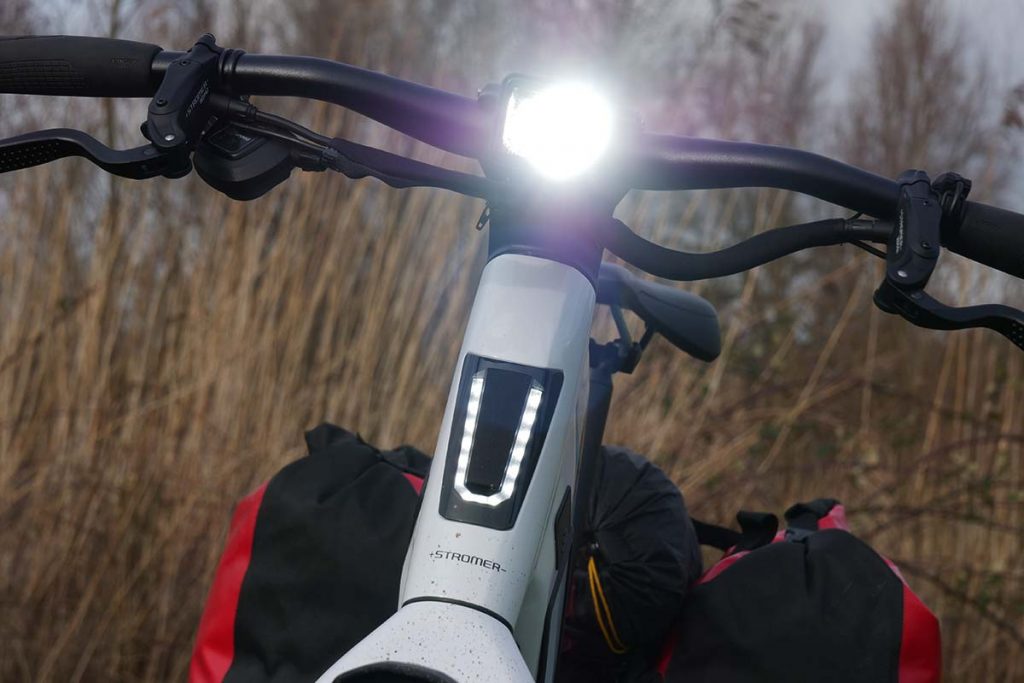

The head light provides 900 lumen in high beam and 600 lumen in low beam. 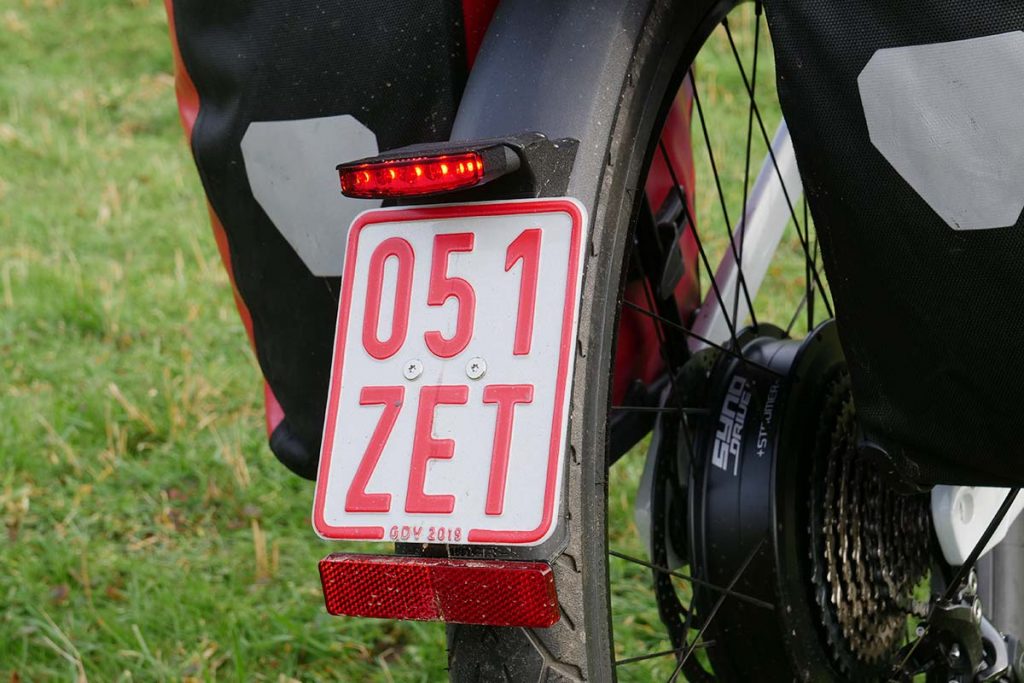
The rear light has a brake light too. Note the Swiss numberplate.
Riding position
The riding position on the Stromer ST3 is a comfortable one. As you can image it is a sporty riding position, but still the weight of the rider is well distributed through saddle and handlebar. It is not that extreme. The saddle is an Ergon SFC 30 Gel and I found it extreme comfortable. The same for the Ergon custom GS1 grips that have been developed together with Stromer.
The handlebar is 690 mm wide and has a very sweet slightly curved shape. The position of the handlebar can not be changed in the vertical direction; the stem does not have any adjustment in this manner. The handlebar can be tilted a bit though. On the left side of the handlebar is a mirror that gives a clear view on what’s behing me. Be ware: It makes the bike quite a bit wider and when I entered the shed while ridding this almost proved to be ‘fatal’. Luckily the mirror is on an swingarm that easily swings back.
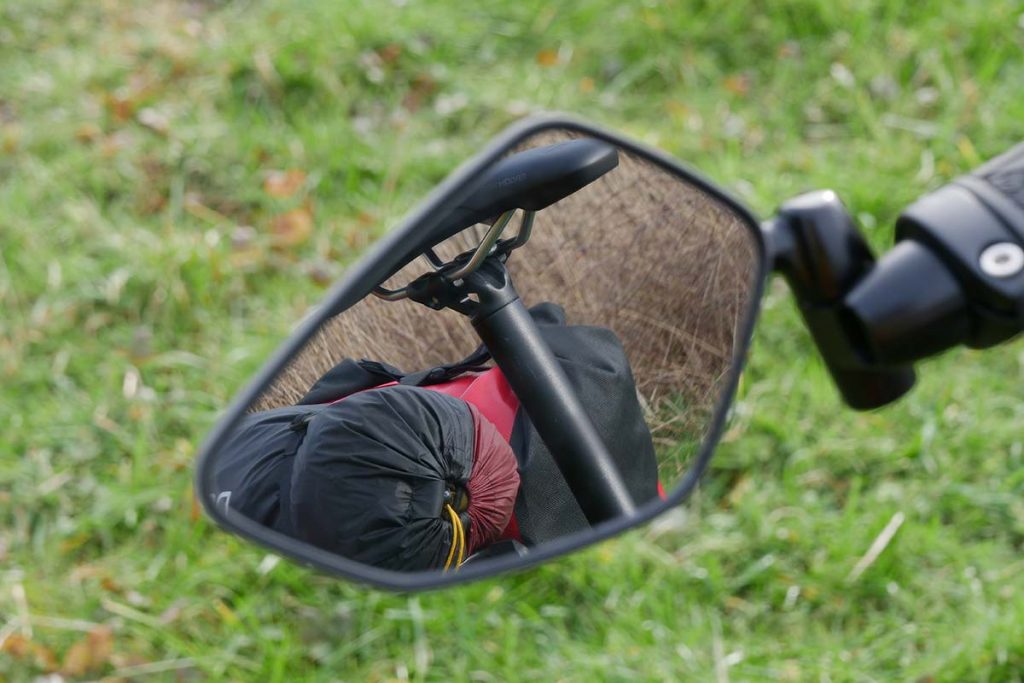
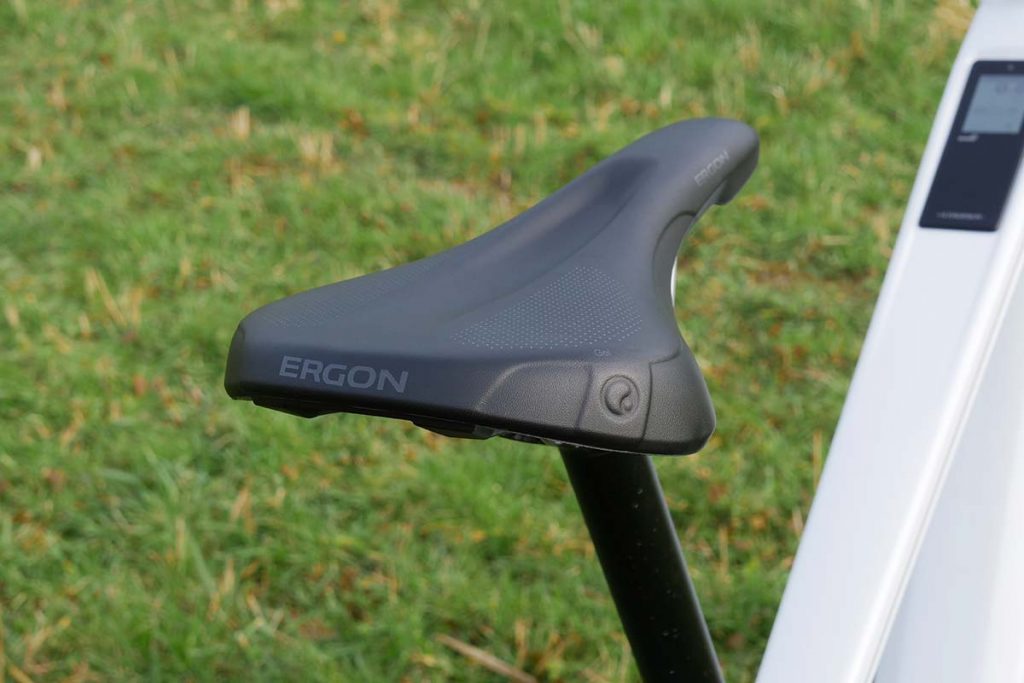
The saddle from Ergon is comfortable. 
The Ergon grips provide support to the palm of the hand.
Riding comfort
As mentioned above: frame and fork are made of aluminium. Both are extremely stiff. This is good since it makes the ST3 handle very predictable. But the stiffness also has a downside. The bike is very sensible to minor hubs and bumps in the road. Riding on fresh smooth tarmac is a dream but as soon as the tarmac is a bit worn out or – worse – tree roots are under the tarmac the bikes feels too hard. Also in roads that are paved with bricks – we have a lot of them in The Netherlands – it starts feeling uncomfortable after a while. Riding long gravel road with the ST3? I would not advice it.
On the positive side on the other hand are the 27.5’’ Cycl-e ST balloon tires from Pirelli: they are big enough to play with and release some pressure if you are doing a lot on non-smooth tarmac. One thing more on the ST3: In the past I did ride a few mid powered e-bikes and a rear wheel powered e-bike once and I must say: the ST3 is very well balanced. Because the weight off the battery in front of the crank and the engine way to the back, it evens out nicely.
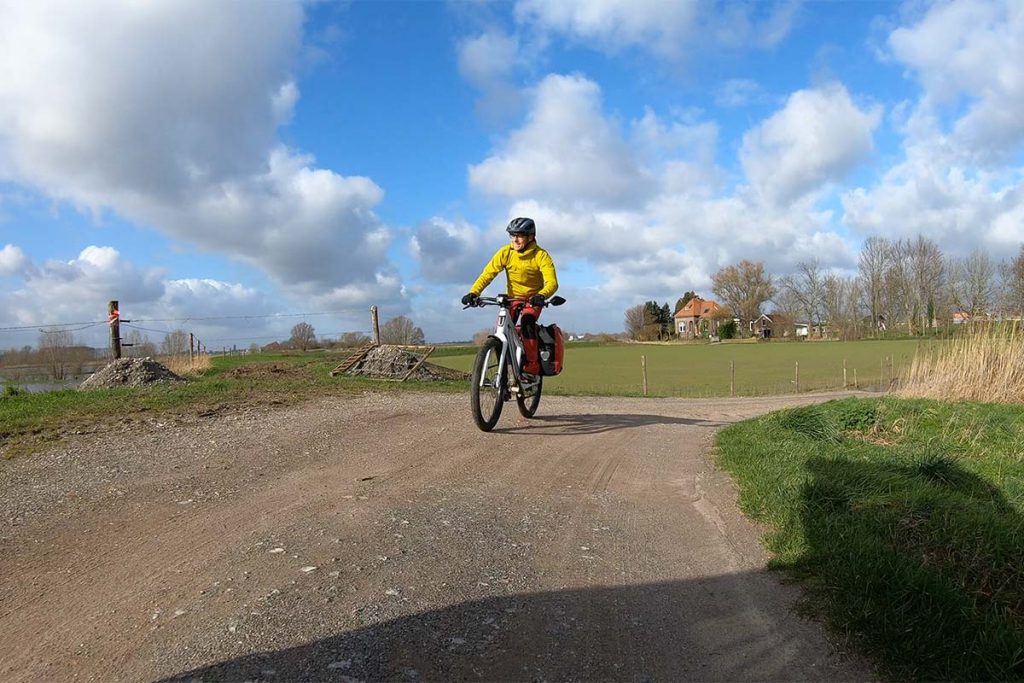

Stromer Bike Configurator
The Stromer that I am testing is a standard test bike but if you want a bit more forgiving ride, that is possible. The stiffness of the frame will not change but you have the possibility to equip the Stromer with an upside-down suspension fork (€ 990,00). Also the position on the bike can be changed by closing a different stem or handlebar in the Stromer Bike Configurator online. I would strongly advice you to go to a bakeshop for this; online is nice but you still not try it.
Safety & OMNI App & Range
I promised to get back on the Stromer OMNI App. There is one thing I don’t get on this Swiss bike: the position of the screen in the top tube. In my life I want to travel safe. In the car I have the speedometer in from on off me so I can see it. On my motorbikes it is is the same and on my mountainbike I have it on the handlebar. On the Stromer it is between my legs! I don’t see it when I am paying attention to the road ahead; at 45 km/h looking down is not an option. I don’t even understand that this construction is legally possible, but apparently it is.
The solution could be the Stromer OMNI app. Stromer has a nice system – comes with the bike – to mount a phone on the stem. If the app would have something like a dashboard with a speedometer that would solve this issue partly. Running out of phone battery power is not a problem since there is an usb-connector in the front of the head tube. Although I don’t really like the execution of it since I don’t think this is a 100% waterproof construction. With this bike it should be a wireless charging system in the stem. And another improvement would be a range prediction that works with a map in the app so you know how long you can ride before the ST3 runs out of power. A distance prediction without the map is on the screen of the Stromer though.

My verdict
I promised myself not to mention it, but there is no way of not mentioning it: the Stromer ST3 is a Tesla Model 3 on two wheels. The Stromer ST3 has proven to be an excellent speed-pedelec with a quite unique market position. It is noiseless and the power delivery is very smooth. The lights are super, the handling predictable and the ride comfortably on smooth commuting tarmac. The range of 65-70 km/h in maximum support is fine for commuting and the other support modes work for relaxed holiday trips. The carrier is good in carrying two full panniers and some more stuff in a duffel between them.
The brakes are top notch! You should be aware that frame and fork are very stiff and that is not very comfortable on uneven surfaces. The fact that the screen that displays the speed is between my legs is silly; it should be in front of the rider. Also a range prediction that works with an active map should be in the app a bike like this. In this respect it is not a Tesla. The price of the Stromer ST3 is € 7.330,00 (price starts at € 6.990,00 for smaller battery) and if you are commuting this is still way cheaper than an electric car and way more healthy. The Stromer ST3 is an excellent bike but it’s not perfect yet. I rate the Stromer ST3 at 8.2 out of 10 points total.
Information
- The Benelux: www.stromerbike.com
- Switserland: www.stromerbike.com
- US: www.stromerbike.com
- UK: www.stromerbike.com
- Germany: www.stromerbike.com
